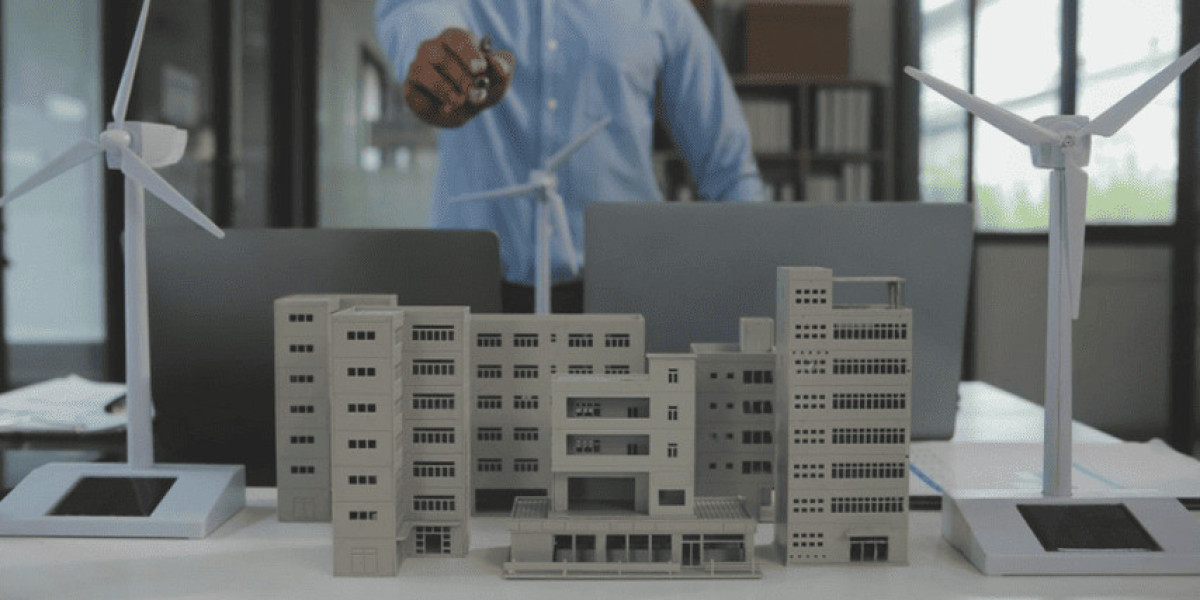Miniature building replicas have become an essential part of architecture, real estate, and design presentations in Dubai. These models offer a realistic preview of complex structures in a compact format.
Model making studios in Dubai rely on a variety of materials to ensure accuracy, durability, and high-end visual appeal. The choice of materials depends on the scale, purpose, budget, and level of detail required. Below is a detailed breakdown of the most commonly used materials in Dubai’s miniature building replica studios.
Foam Board and Foam Core
Foam board and foam core are widely used in architectural model making across Dubai. These materials are lightweight, easy to cut, and suitable for both concept models and detailed mockups.
They serve well for structural components like walls and base platforms. Model makers use them when speed and flexibility are important. Foam board is also ideal for white models, which are commonly used in the early design phases.
Acrylic and Plexiglass Sheets
Clear and colored acrylic sheets are a favorite in many high-end model making Dubai studios. These materials are popular for windows, facades, and structural elements that require transparency. Plexiglass gives a clean and modern look, perfect for showcasing luxury real estate or futuristic designs. Laser cutting technology allows precise shaping, which enhances the quality and accuracy of the final model.
MDF (Medium-Density Fiberboard)
MDF is another common material for base platforms and supporting structures. It offers strength and smooth surface finish. In Dubai’s studios, MDF is often used for large masterplans or urban planning models. It is heavier than foam board but provides better support for multi-story or detailed buildings. It also holds paint and adhesives well, making it ideal for display-ready models.
Resin and Epoxy
For highly detailed miniature building replicas, resin is often the material of choice. It allows for the casting of small parts like ornaments, sculptures, and customized architectural details. Epoxy resin also helps with the creation of transparent water features or glass-like surfaces. In Dubai, model makers use resin to replicate pools, glass panels, and artistic elements in both residential and commercial models.
PLA and ABS (Used in 3D Printing)
3D printing is gaining popularity in the model making industry in Dubai. PLA (Polylactic Acid) and ABS (Acrylonitrile Butadiene Styrene) are two commonly used 3D printing materials. These plastics are used for creating intricate components like balconies, railing, or decorative facades.
PLA is more eco-friendly, while ABS is stronger and more heat-resistant. Studios often use these materials to speed up production and add detailed customizations to their models.
PVC Sheets
PVC sheets are lightweight, flexible, and easy to cut. They are used for both conceptual and display-quality models. In Dubai, PVC is chosen for parts that require durability and clean edges. It is often used for massing models where multiple building blocks or units are repeated. The material is easy to paint and can be glued with various adhesives, making it versatile in model construction.
Cardboard and Paperboard
Though basic, cardboard and paperboard are still used in early-stage design models. They are ideal for quick mock-ups and structural studies. Dubai’s studios often use them during brainstorming or for testing proportions. These materials are cost-effective and easy to handle. While not suitable for final presentations, they are perfect for fast and efficient model drafting.
Metal Components
Metal pieces, especially brass and aluminum, are used in high-detail or luxury model replicas. These are often incorporated for railings, structural frames, or mechanical details. Dubai studios occasionally use etched metal sheets for delicate elements like lattice panels or patterned facades. These materials add durability and elegance to the final model, making them popular in premium architectural presentations.
Styrene and Plastic Sheets
Styrene is a type of plastic used frequently in model making. It is thin, easy to cut, and comes in various textures. In Dubai, styrene sheets are often used for surface cladding, paving, and even detailed rooftop elements. They can be painted to replicate stone, tile, or wood textures. Plastic sheets are also used to create road networks, landscapes, or urban environments around the buildings.
Wood and Balsa
Wood is sometimes used for miniature replicas when a more natural or traditional look is desired. Balsa wood is soft, lightweight, and easy to cut, making it perfect for hand-made models. In Dubai, it’s often used for structural models, historical buildings, or projects that focus on sustainability. It gives a warm and organic feel, especially when left unpainted.
Glass and Mirrored Surfaces
Though not used for entire models, glass and mirrored panels are occasionally included in miniature building replicas. In Dubai, they are used to simulate high-end finishes or reflective facades. Some studios use actual glass in the base or display case to enhance the overall presentation. These elements are particularly popular in models designed for luxury hotels or modern commercial towers.
Landscaping Materials
No miniature building replica is complete without landscaping. Model making studios in Dubai use synthetic grass, tiny trees, sand, and gravel to create realistic outdoor scenes. These materials help bring the project to life and provide a more immersive experience for clients. Some even include miniature vehicles, people, and lights to increase visual appeal.
Conclusion
Model making in Dubai is both an art and a science. The selection of materials plays a huge role in the final outcome. From foam board and acrylic to resin, MDF, and 3D printed plastics, each material serves a specific purpose.
Studios often combine multiple materials to achieve the desired level of detail and functionality. As technology advances, the range of materials continues to grow, offering even more possibilities for creating accurate and visually stunning miniature building replicas in Dubai.









